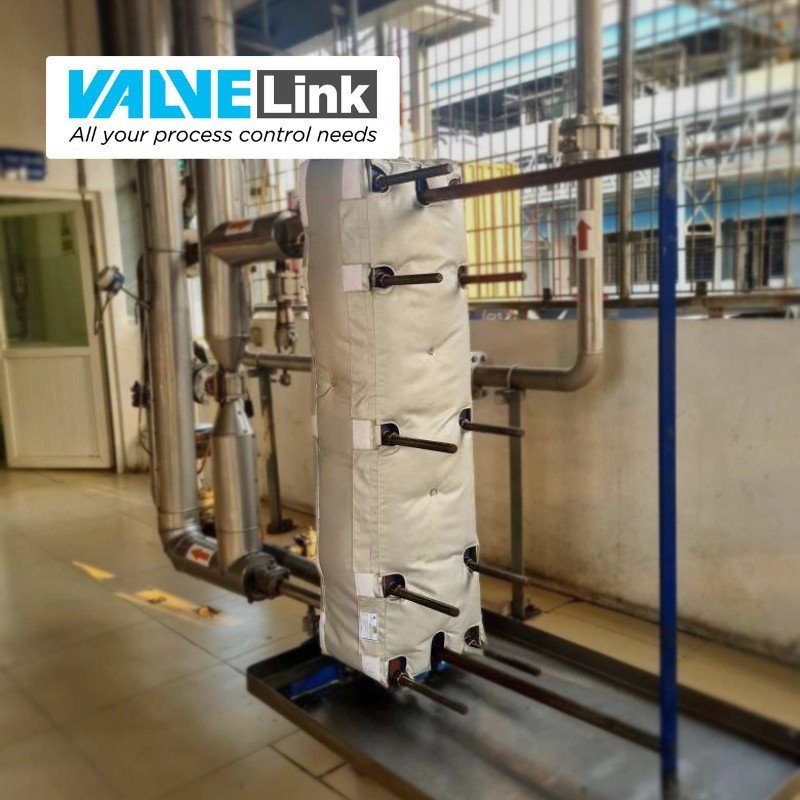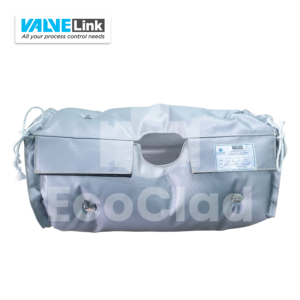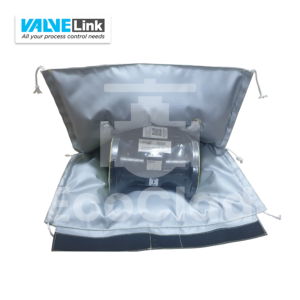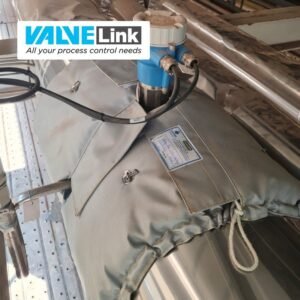Heat exchangers are a vital component in many industries, operating to efficiently transfer thermal energy from one medium to another. However, with their large surface areas and frequent operation at high temperatures, heat exchangers are also one of the most significant points of energy loss, reducing overall system efficiency and posing potential workplace safety risks.
The Insulation Challenges of Heat Exchangers
Unlike straight pipe sections, insulating a heat exchanger presents many unique challenges due to its complex structure:
- Complex Construction: The two most common types of heat exchangers, plate type and shell and tube type, are designed with intricate details that render conventional insulation materials ineffective. Because these materials cannot cover the entire unit, they easily leave gaps that cause heat loss.
- Large Radiating Surface: The body of a heat exchanger has a very large surface area, causing an extremely significant amount of heat to be radiated into the surrounding environment. This wastes energy and raises the temperature of the work area.
- Frequent Maintenance Requirements: Heat exchangers need to be regularly inspected, cleaned, and maintained. Fixed insulation methods must be destroyed and redone after each maintenance cycle, resulting in significant costs and downtime.
- Prone to Technical Issues: Heat exchangers often suffer from corrosion, blockages, leaks, or fouling during operation. These problems reduce heat transfer efficiency, increase energy consumption, and can lead to shutdowns for repairs.
The Optimal Solution: Custom-Fitted Insulation Jackets
We provide an insulation jacket solution that is uniquely designed and custom-fitted for each heat exchanger system. This is an engineered product, meticulously calculated to completely resolve the challenges of insulating this critical equipment:
- Custom-Fit Design, Tailored to Each Device: Using precise surveying and fabrication technology, our insulation jackets will perfectly conform to every component. This intelligent design eliminates all gaps, completely preventing heat loss at connection points.
- Optimizing Heat Transfer Efficiency: When the device is well-insulated, the process fluid temperature is kept stable, helping to maintain the necessary temperature difference and enhance heat exchange efficiency. As a result, the system operates more effectively and at its designed capacity.
- Significant Heat Loss Reduction, Saving Operational Costs: By preventing heat from radiating into the environment, custom-fitted jackets significantly reduce the energy consumption needed to heat or cool the fluids. This benefit is directly reflected in monthly fuel bills (gas, electricity, oil), delivering sustainable economic returns.
- Flexible Removal and Reinstallation for Convenient Maintenance: The jackets are designed in separate modules, connected by straps, high-temperature buckles, and heavy-duty Velcro fasteners. This allows the technical team to quickly remove and reinstall the jacket in minutes when needing to inspect or clean the equipment, without requiring an insulation specialist.
- High-Grade Materials, Durable in Industrial Environments: The product is crafted from specialized materials that can withstand high temperatures, chemicals, oils, and are water-resistant. This ensures the insulation jacket has a long lifespan, operating reliably and durably alongside the equipment’s life cycle.
- Ensuring Workplace Safety: Mitigates the risk of leaks causing slips and falls, as well as the risk of burns for operators.
Investing in custom-fitted insulation jackets for your heat exchangers is a smart investment decision that not only cuts energy costs but also enhances efficiency and ensures safety for your entire production process.
Would you like to learn more about our process for surveying and designing an insulation jacket for the specific type of heat exchanger you use?





